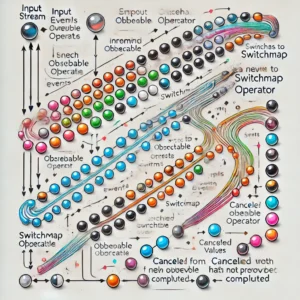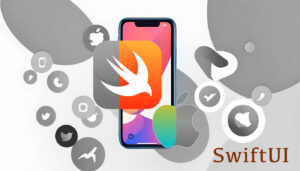Mobile app development has become a crucial aspect of modern-day businesses. With the increasing demand for mobile apps, developers are required to choose between the two most popular mobile operating systems, iOS, and Android. Both iOS and Android have their own unique features and advantages, and developers must weigh the pros and cons of each platform before deciding which one to develop their app for.
iOS app development offers a high level of security, an intuitive user interface, and a consistent user experience across all devices. On the other hand, Android development provides flexibility, a wider audience, and a mature ecosystem. Developers must consider various factors such as the target audience, budget, and app features before choosing between iOS and Android development. Furthermore, the development process, programming languages, and tools used for each platform also play a significant role in the decision-making process.
Understanding Mobile App Development
Mobile app development refers to the process of creating software applications that run on mobile devices, such as smartphones and tablets. There are two major mobile operating systems, Apple’s iOS and Google’s Android, and developers must choose which platform to develop for based on their target audience and project requirements.
Developing a mobile app involves several stages, including planning, design, development, testing, and deployment. While the overall process is similar for both iOS and Android, there are some key differences to keep in mind.
One major difference is the programming language used. iOS apps are primarily developed using Swift or Objective-C, while Android apps are developed using Java or Kotlin. Another difference is the development environment, with iOS developers using Xcode and Android developers using Android Studio.
When it comes to design, Apple tends to prioritize app content over design, while Android offers more flexibility in terms of customization. Developers should refer to the respective platform’s design guidelines for best practices.
In terms of distribution, iOS apps are distributed through the Apple App Store, while Android apps are distributed through the Google Play Store. Each platform has its own set of guidelines and requirements for app submission and approval.
Overall, mobile app development requires a combination of technical skills, creativity, and attention to detail. Developers must stay up-to-date with the latest trends and technologies to create successful and engaging apps for their target audience.
iOS Development
Overview
iOS is a mobile operating system developed by Apple Inc. for its mobile devices such as iPhones, iPads, and iPods. iOS is known for its smooth and intuitive user interface, high-quality hardware, and strict app development guidelines. The platform is highly secure, as Apple has strict control over the hardware and software of its devices. This control allows Apple to provide regular software updates, which ensures that the devices remain secure and up-to-date.
iOS is built on the Unix-based operating system, which makes it highly stable and reliable. The platform supports a wide range of programming languages, including Swift and Objective-C, making it easy for developers to create iOS applications. iOS also provides a variety of frameworks and tools, such as Xcode and Interface Builder, which make the development process more efficient.
Advantages of iOS Development
One of the biggest advantages of iOS development is the high-quality hardware that Apple provides. This hardware is designed to work seamlessly with the iOS operating system, which means that developers can create apps that are optimized for the hardware. This results in a better user experience, as the apps are faster, smoother, and more responsive.
Another advantage of iOS development is the strict app development guidelines that Apple has put in place. These guidelines ensure that all apps are of high quality, which means that users can trust the apps they download from the App Store. This also means that developers can focus on creating great apps, rather than worrying about security and quality issues.
iOS also provides a robust ecosystem of tools and frameworks, which makes it easier for developers to create high-quality apps. For example, Xcode provides a range of tools for debugging, testing, and deploying apps, while Interface Builder makes it easy to create user interfaces.
Challenges in iOS Development
One of the biggest challenges in iOS development is the strict app development guidelines that Apple has put in place. These guidelines can make it difficult for developers to create apps that are innovative or unique. Additionally, Apple’s approval process for apps can be lengthy and time-consuming, which can slow down the development process.
Another challenge in iOS development is the limited customization options that are available. Unlike Android, which allows for a high degree of customization, iOS is more restrictive in terms of what developers can do. This can make it difficult for developers to create apps that stand out from the competition.
Finally, iOS development can be expensive, as developers need to invest in Apple hardware and software. This can be a barrier to entry for some developers, especially those who are just starting out.
Android Development
Overview
Android is a mobile operating system developed by Google and is used by several smartphone manufacturers such as Samsung, LG, and Motorola. Android is an open-source platform, which means that developers can customize it to suit their needs. Android is written in Java, and developers use the Android Software Development Kit (SDK) to create applications for Android devices.
Android has a large market share, with over 80% of the global smartphone market running on Android. This means that developing an Android app can potentially reach a wider audience than developing an iOS app.
Advantages of Android Development
One of the main advantages of developing for Android is the flexibility it offers. Android is an open-source platform, which means that developers can customize it to suit their needs. They can create custom ROMs, launchers, and other applications that can enhance the user’s experience. This flexibility also extends to app development, as developers have more control over the app’s design and functionality.
Another advantage of Android development is the ease of publishing apps. Developers can easily publish their apps on the Google Play Store, which has a much lower barrier to entry than Apple’s App Store. The Google Play Store also has a larger user base, which means that apps have a higher chance of being downloaded and used.
Challenges in Android Development
One of the biggest challenges in Android development is fragmentation. There are many different versions of the Android operating system in use, and each version has its own set of features and limitations. This can make it difficult for developers to create apps that work seamlessly across all devices.
Another challenge in Android development is device compatibility. Android runs on a wide variety of devices, each with its own screen size, resolution, and hardware specifications. This can make it difficult for developers to create apps that look and perform well on all devices.
Overall, Android development offers a lot of potential for developers looking to create mobile applications. While there are challenges to overcome, the flexibility and market share of the Android platform make it a worthwhile investment for many developers.
Comparison: iOS vs Android Development
When it comes to mobile app development, two major platforms dominate the market: iOS and Android. Both platforms have their own unique features and differences. In this section, we will compare iOS and Android development in terms of development tools, programming languages, user interface design, and app store submission process.
Development Tools
Developers who choose to develop for iOS have to use Xcode, Apple’s integrated development environment (IDE). Xcode includes a wide range of tools, including a code editor, a visual editor, and a debugger. It also includes a simulator that allows developers to test their apps on various iOS devices.
On the other hand, Android developers can choose from a variety of IDEs, including Android Studio, Eclipse, and IntelliJ IDEA. Android Studio is the official IDE for Android development and includes a similar set of tools to Xcode.
Programming Languages
iOS developers use Swift, Apple’s native programming language, which was introduced in 2014. Swift is a modern and powerful language that is easy to read and write. It is also faster and more secure than its predecessor, Objective-C.
Android developers typically use Java and/or Kotlin. Java is a mature and widely used language that has been around since the 1990s. Kotlin is a newer language that was introduced in 2011 and has gained popularity in recent years due to its concise syntax and improved safety features.
User Interface Design
iOS and Android have different design guidelines and principles. iOS follows Apple’s Human Interface Guidelines, which emphasize simplicity, clarity, and depth. iOS apps typically have a clean and minimalist design with a focus on typography and white space.
Android follows Google’s Material Design guidelines, which emphasize bold graphics, motion, and tactile surfaces. Android apps typically have a more colorful and dynamic design with a focus on animations and transitions.
App Store Submission Process
Submitting an app to the App Store and Google Play Store is a different process. Apple’s App Store has a stricter review process, which can take longer to get approval. However, once an app is approved, it is typically more stable and secure.
Google Play Store, on the other hand, has a more lenient review process, which can result in more low-quality apps. However, it is easier and faster to get an app approved on Google Play Store.
Overall, both iOS and Android have their own strengths and weaknesses. Developers should choose the platform that best suits their needs and goals.
Market Share and Demographics
When it comes to mobile app development, market share and demographics play a crucial role in determining the success of an app. Android and iOS are the two major players in the mobile industry, with Android having a larger market share than iOS. As of August 2021, StatCounter recorded that Android-based Samsung and iOS-equipped Apple mobile devices accounted for a combined 54.39% of all mobile devices worldwide. Non-Apple/Android smartphones have a clear majority of the market share globally in 2021.
According to recent statistics, Android dominates the global smartphone market with a market share of about 73%, while iOS-based products have a share of about 21% of the mobile market. However, it is important to note that market share varies by region and country. For instance, in the United States, iOS has a larger market share than Android.
In terms of demographics, Android and iOS users have different characteristics. Android users tend to be more budget-conscious, with a higher percentage of users in developing countries. On the other hand, iOS users tend to be more affluent, with a higher percentage of users in developed countries. Additionally, iOS users are more likely to spend money on apps and in-app purchases than Android users.
Developers need to consider these market share and demographic factors when deciding which platform to develop for. If they want to target users in developing countries with budget-friendly apps, Android may be the better choice. However, if they want to target users in developed countries who are more likely to spend money on apps, iOS may be the better choice. Ultimately, the decision depends on the specific goals and target audience of the app.
Learning Curve
Developing mobile apps for both iOS and Android platforms requires knowledge of different programming languages, tools, and frameworks. The learning curve for each platform can vary depending on the developer’s existing skills and experience.
iOS Development Learning Curve
To develop iOS apps, developers need to learn Swift or Objective-C programming languages. While Swift is a modern and more user-friendly language, Objective-C is still used in many legacy apps. Developers also need to learn Xcode, Apple’s Integrated Development Environment (IDE), to write, test, and debug their code. Xcode includes various tools for designing user interfaces, managing assets, and integrating third-party libraries.
Additionally, developers need to learn Apple’s Human Interface Guidelines (HIG) to design apps that provide a consistent and intuitive experience to users. The HIG covers topics such as app architecture, navigation, layout, typography, and color. Developers also need to understand Apple’s App Store Review Guidelines to ensure their app meets Apple’s quality standards and policies.
Android Development Learning Curve
To develop Android apps, developers need to learn Java or Kotlin programming languages. Kotlin is a newer language that offers more concise and expressive syntax than Java. Developers also need to learn Android Studio, Google’s official IDE, to write, test, and debug their code. Android Studio includes various tools for designing user interfaces, managing resources, and integrating third-party libraries.
Developers also need to learn Android’s Material Design guidelines to design apps that follow Google’s design principles and offer a consistent and visually appealing experience to users. Material Design covers topics such as layout, typography, color, and motion. Developers also need to understand Google Play Store policies and guidelines to ensure their app meets Google’s quality standards and policies.
Overall, the learning curve for both iOS and Android development can be steep, especially for developers who are new to mobile app development. However, with the right resources, such as online courses, documentation, and community forums, developers can quickly gain the necessary skills and knowledge to build high-quality apps for both platforms.
Choosing the Right Platform for Your App
When it comes to mobile app development, choosing the right platform is crucial for the success of your app. The two most popular platforms are iOS and Android, and each has its own advantages and disadvantages. In this section, we will discuss the factors to consider when choosing the right platform for your app.
Target Audience
The first factor to consider is your target audience. If your app is targeted towards users in developed countries such as the US, Canada, or Europe, then iOS is the platform to go for. On the other hand, if your target audience is in developing countries such as India, Africa, or South America, then Android is the better choice. This is because Android has a larger market share in these regions.
Development Cost
The cost of development is another important factor to consider. Developing an app for iOS is generally more expensive than developing for Android. This is because iOS apps require more coding and testing due to the variety of devices and screen sizes. On the other hand, developing for Android is less expensive as it requires less coding and testing.
Revenue Model
The revenue model of your app is also an important consideration. If your app is a paid app, then iOS is the better choice as iOS users are more likely to pay for apps than Android users. However, if your app is free and relies on in-app purchases or advertising revenue, then Android is the better choice as it has a larger user base.
App Store Approval Process
The app store approval process is another factor to consider. Apple has a strict approval process for apps, which can take several days or even weeks. On the other hand, Android has a more relaxed approval process, which can take only a few hours. If you need to get your app to market quickly, then Android is the better choice.
User Experience
Finally, the user experience is an important consideration. iOS has a more consistent user experience as the devices are made by Apple. On the other hand, Android has a more fragmented user experience as there are many devices made by different manufacturers. However, Android offers more customization options, which can be attractive to some users.
In conclusion, choosing the right platform for your app requires careful consideration of several factors. By considering your target audience, development cost, revenue model, app store approval process, and user experience, you can make an informed decision and increase the chances of success for your app.
What are the alternate options?
If you want to avoid choosing between iOS and Android, there are some viable alternatives to the usual selection. These alternatives include Ionic, Flutter, Kotlin Multiplatform, and React Native.
Ionic
Ionic is an open-source mobile app development framework. It uses web technologies like HTML, CSS, and JavaScript to build cross-platform mobile apps. With Ionic, developers can build apps for iOS, Android, and the web using a single codebase.
Flutter
Flutter is a mobile app development framework that allows developers to build high-performance, natively compiled apps for mobile, web, and desktop from a single codebase. Flutter uses the Dart programming language and provides a rich set of pre-built widgets that can be customized to create beautiful, responsive user interfaces.
Kotlin Multiplatform
Kotlin Multiplatform is a mobile app development framework that allows developers to write shared business logic and use it across different platforms. With Kotlin Multiplatform, developers can write code in Kotlin and share it between Android and iOS apps, reducing development time and cost.
React Native
React Native is a mobile app development framework that allows developers to build high-quality, native apps for iOS and Android using JavaScript and React. React Native provides a rich set of pre-built components that can be customized to create beautiful, responsive user interfaces.
Overall, these alternatives provide developers with more flexibility and options when it comes to mobile app development. Each framework has its own strengths and weaknesses, so it’s important to choose the one that best fits your project’s needs.
Conclusion
In conclusion, when it comes to mobile app development, both iOS and Android have their own strengths and weaknesses. Choosing between the two platforms depends on various factors, including the target audience, budget, and project requirements.
Developers who prioritize ease of development and customization may prefer Android, while those who value a seamless user experience and higher revenue potential may lean towards iOS development.
In terms of market share, Android has a larger global market share, while iOS dominates in more developed countries. However, both platforms have a massive user base and offer significant revenue opportunities for developers.
Ultimately, the decision between iOS and Android development comes down to the specific needs and goals of the project. By carefully considering the project requirements and weighing the pros and cons of each platform, developers can make an informed decision that will lead to a successful app.






